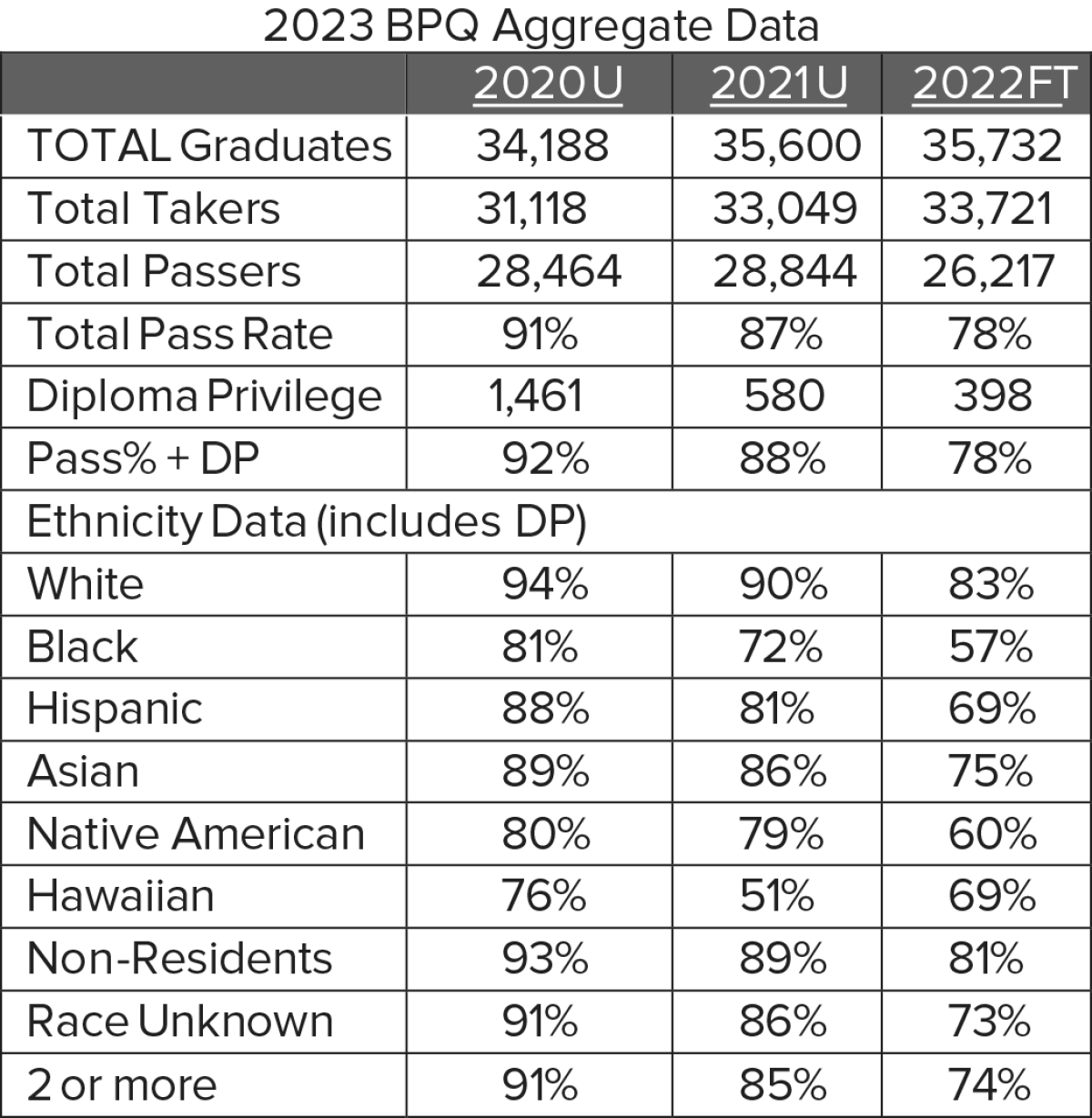ABA Releases Report on Bar Pass Data By Race, Ethnicity, Gender

This April, the Managing Director’s Office of the ABA Section of Legal Education and Admissions to the Bar released a new set of bar pass data for American Bar Association-approved law schools.
The data provide national “ultimate” and first-time percentage pass rates based on race, ethnicity and gender. The charts, which are incorporated into the section’s Legal Education Statistics, include aggregate data in nine different ethnicity categories for information collected in 2022 and 2023 broken down by gender.
The data was reported to the ABA by the 196 law schools accepting new students in their ABA Standard 509 questionnaire, which covers about a dozen categories, including employment and bar passage outcomes, among other areas.
Under the 2019 revisions to the bar passage rule known as Standard 316, ABA-approved law schools must have 75% of their graduates who take the bar examination pass within two years of graduation or face the potential
The following chart presents the performance of the various racial and ethnic groups based on data submitted in the 2022 and 2023 Bar Passage Questionnaire (the “BPQ”). The left column reports the Ultimate Pass Rate for the graduating classes after two years. The middle column reports the Ultimate Pass Rate for the graduating classes in that year after one year. The right column reports the First Time Pass Rate for that year’s graduating classes. The reported information does not depict differences in bar passage rates based on any other background variables.

of being found out of compliance. The section maintains both percentage pass rates for first-time takers and the two-year aggregate figure, known as the “ultimate” pass rate.
This is the third consecutive year that the section is releasing this data in response to concerns about the lack of national data on bar passage by members of different racial and ethnic groups.
“Several years ago, we promised to collect and publish such aggregate data and consider whether the requirements of Standard 316 needed to be reviewed in light of what we collected,” said Bill Adams, ABA managing director of accreditation and legal education. “We will continue to evaluate the annual data and consider any changes as appropriate.”
The council, or governing board of the section, is recognized by the U.S. Department of Education as the national accreditor of law schools. In that capacity, the council serves as an independent arm of the ABA.